The comparison between a fuel injection vs carburetor dirt bike has gotten even more popular, but how do you know which one is best for you? Maybe you’re looking for your first dirt bike or just want to upgrade – either way, this article will make the decision easy for you!
I’m going to show you the main differences between a carb and EFI fuel system for dirt bikes, why each one is better or worse, and how to decide which is best for you based on your specific needs!
How does a carburetor work?
In simple terms, a carburetor controls the flow of air and fuel into the engine through small jet circuits. It’s fairly simple how it works, and yet the internal design of a carburetor is rather complex.
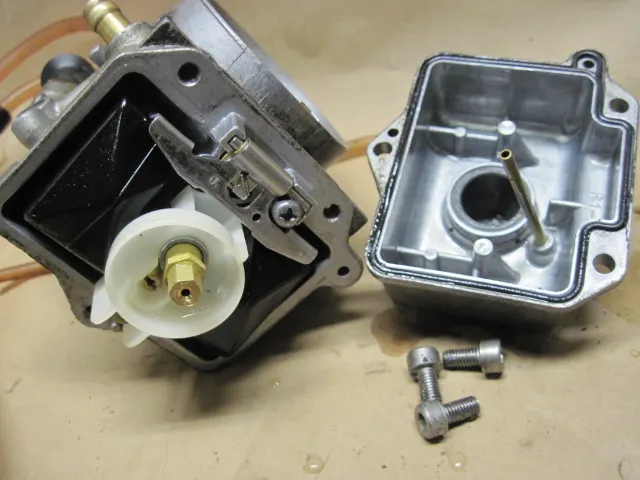
Fuel sits in the float bowl at the bottom of the carb, and there are 3 main jet circuits on most dirt bike carbs that control the air to fuel ratio at different throttle position openings.
The primary jet circuits on a dirt bike carb are:
- Pilot (slow) jet
- Needle jet
- Main jet
They need to be adjusted and tuned separately, but they all work together to make your dirt bike run properly. There are other parts that affect the starting and performance of a dirt bike carb, but these are the most important parts that need to be adjusted most often.
How does electronic fuel injection work?
Fuel injection systems typically use a computer controller injector system that controls how much fuel is sprayed into the engine. There is a throttle position sensor that tells the computer controller how much fuel to give the engine based on how much the throttle is opened and the engine RPM.
Most dirt bikes are an open-loop system, which means that they don’t have an oxygen or exhaust gas temperature sensor – it won’t change the fuel mixture if you change the exhaust or make an engine modification unless you manually adjust the fuel controller.
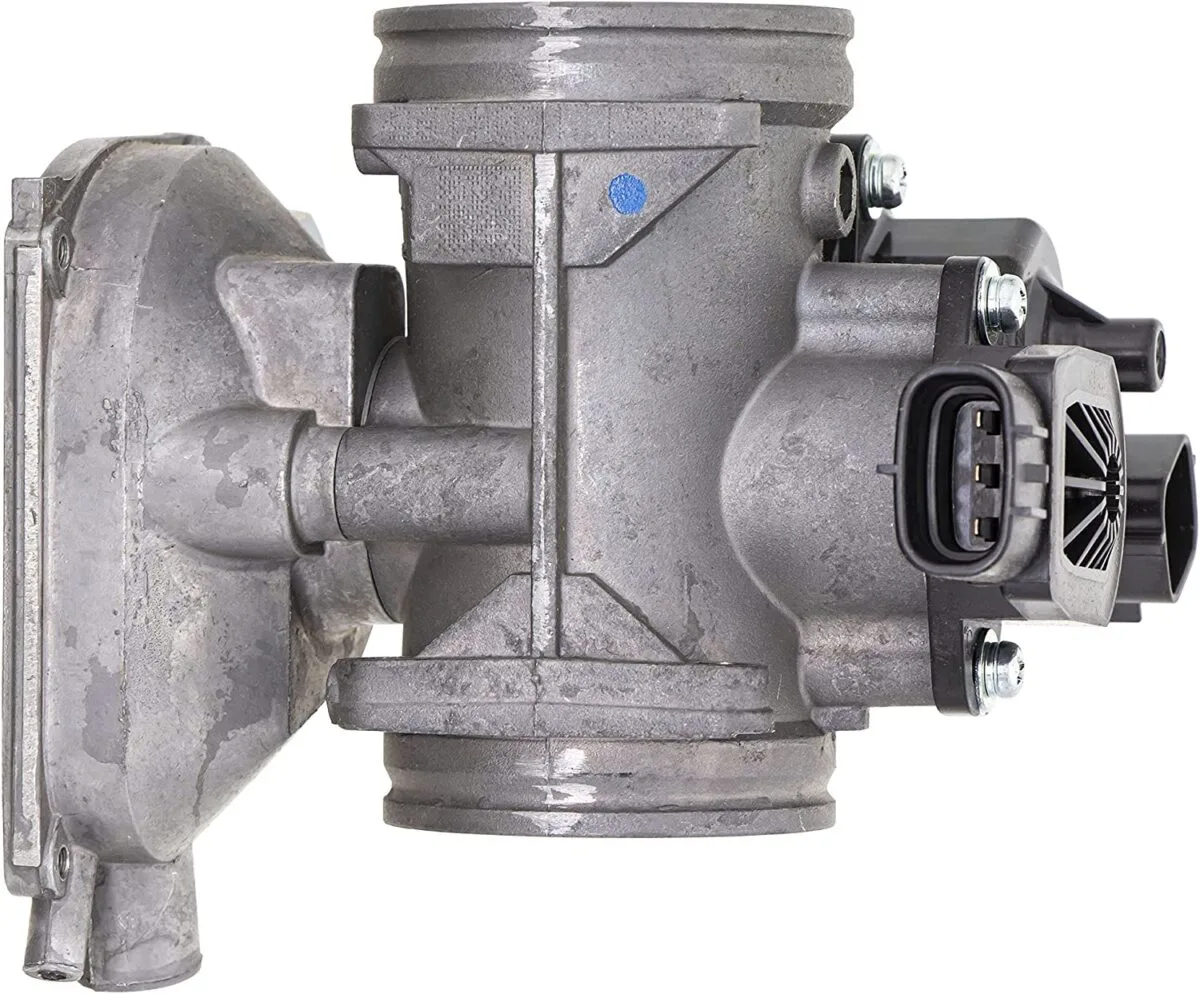
Carb vs EFI – what’s the main difference then?
The biggest difference is that a carburetor uses the atmospheric air pressure and jet circuits to control the air to fuel mixture, while an EFI system uses an electronically-controlled throttle body to meter (control) the air to fuel mixture.
Now, I’ll show you the practical differences of a dirt bike carb vs fuel injection when it comes:
- Starting
- Maintenance
- Power
- Reliability
- Price
- Overall pros & cons
Starting – which is easier?
One of the biggest complaints about dirt bikes with a carburetor is that they can be hard to start, but there are many factors involved. The most important variables are the jetting and how long your dirt bike has been sitting.
Cold starting with a carb
Since engines need a richer fuel mixture when the engine is cold (same as air temp), the jetting needs to be temporarily changed. That’s why dirt bike carbs have a choke.
It allows more fuel in, but it’s not always a perfect ratio. If you’re jetting is spot-on, starting your carbureted dirt bike is not hard, but it might run a little rough until it’s fully warmed up and you turn the choke off.
When a carburetor sits in storage
Another issue with a dirt bike carburetor is that it can get dirty and gum up in a matter of months or even weeks. This happens because pump gas goes bad and will clog the tiny jet circuits in the carb, causing it to not start or stay running.
In dry climates, the internal o-rings or gaskets can dry up and crack if you completely drain them. This will cause them to fail and leak when you turn the gas back on after sitting for months or years.
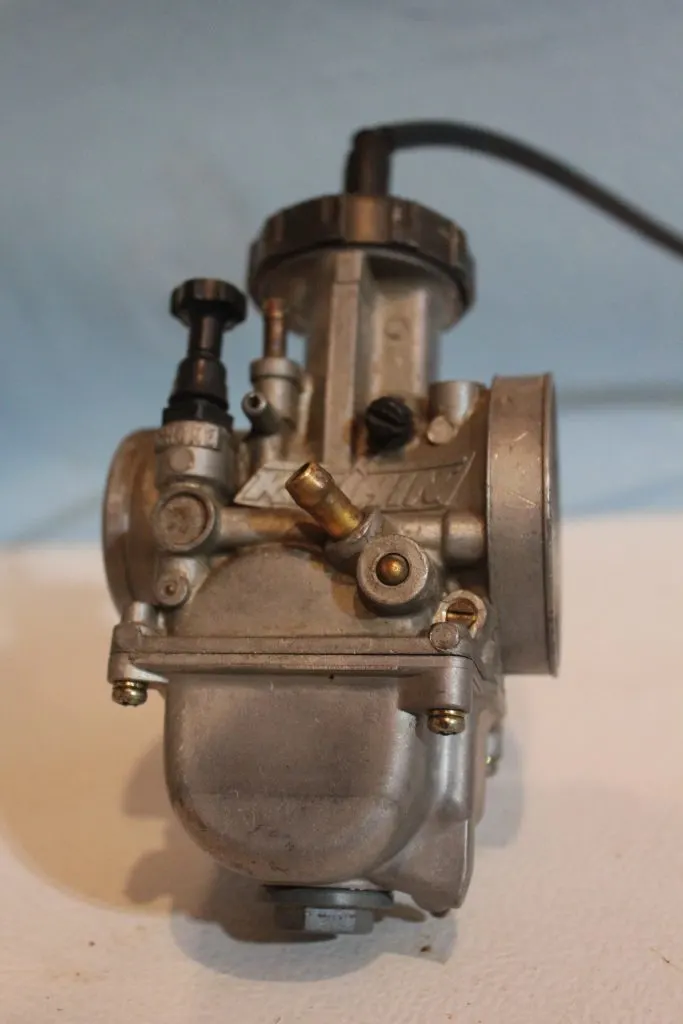
Cold starting with EFI
Fuel injection, when tuned properly, starts more easily when hot or cold. It automatically compensates for the air temp and how much gas it needs to start it.
As the engine warms up, the computer also adjusts the fuel mixture to run smoothly.
Will an EFI dirt bike have problems after sitting?
Fuel injection systems on a dirt bike can still have problems from sitting, but it’s usually not as much of an issue as a carburetor. When gas sits for too long, it breaks down and makes a gummy substance.
This is more likely to clog a tiny carb jet, but a fuel injector has a much higher pressure.
Maintenance
There actually isn’t much maintenance difference between a dirt bike with a carb vs fuel injection. The problem is when you let your bike sit for long periods of time 3+ months.
Dirt bike carb maintenance
Since the jet circuits and passages can gum up and clog fairly quickly (especially on smaller carbs), there are two things you should do to reduce the amount of maintenance or cleaning.
First, you should use the highest quality gas you can afford. For pump gas, this is usually non-oxygenated, which doesn’t break down as quickly as gas with ethanol because it doesn’t absorb water as easily.
Next, you simply need to ride more. If you can ride at least 1-2 times per month, you’ll be less likely to have a problem that requires you to work on your dirt bike.
What to do when your carb is dirty and won’t start
There are usually different fixes for a dirty carb; one is quick and the other requires removing the carb from the bike.
First, you can try draining the gas from the float bowl from the drain plug/screw and putting new gas in the fuel tank. If that doesn’t work, then you’ll have to do a deep cleaning, which has always worked for the dirtiest carbs for me.
Dirt bike fuel injection maintenance
Since a fuel injector doesn’t clog up as easily as a carburetor, there usually isn’t much maintenance. With that said, it may require attention if it starts to run rough.
You can try running a fuel injector cleaner through it, or it may be a dirty fuel filter. A common sign is cutting out at high RPM under a heavy load.
Power
One of the biggest complaints of “EFI” from old-school carburetor guys is that fuel injection doesn’t make as much power. That may be true when it comes to peak power, but EFI technology continues to get better and there’s more to it than peak horsepower.
Are you faster with a “slower feeling” dirt bike?
The thing with fuel injection on a dirt bike is that it can “feel” slower than a carbureted dirt bike, but why? This is because the throttle response is so good and the power is so smooth.
So, when you whack the throttle, there’s no hesitation – it just goes. That can feel slower compared to a carb that gives you a slight hesitation or bog and then “hits” hard.
Reliability
Which is going to cause you less problems and not break down on the trail? Well, there are more variables that make this a complex answer, but I’ll make it as simple as possible.
A carb and fuel injector can be just as reliable if you follow these simple habits:
- Use high quality gas without ethanol in it
- Always use fresh gas
- Ride your dirt bike at least 1-2 times per month to prevent fuel going bad and causing problems
- Don’t let the gas completely run out in the tank – dirt/sediment can get sucked through the fuel line
Older model dirt bikes with fuel injections may be more likely to have problems. This is just because the first years of EFI on dirt bikes didn’t have as much time for the manufacturers to figure out the common issues.
Price – EFI vs Carb cost comparison
You could do the simple comparison of how much a dirt bike with a carb vs a dirt bike with EFI costs, but that’s not always accurate because most carb’d dirt bikes aren’t sold anymore.
Yes, EFI dirt bikes cost more because dirt bike companies raised the prices of new bikes due to developing the new technology. But, the cost to maintain them isn’t much different. It really comes down to how you maintain and ride your dirt bike.
Pros & Cons – Which is better?
Still can’t decide? I’ll give you the most practical advantages and disadvantages of a carb vs fuel injected dirt bike:
Carburetor
Pros:
- Simple – no electronics to worry about (except on bikes with a TPS)
- Only requires simple tools and jets to make a tuning change
- Parts are usually cheaper
- Problems are generally easier to diagnose
- Can make more peak horsepower
Cons:
- Doesn’t compensate for elevation and weather changes
- Can be harder to start if jetting isn’t properly tuned
- Gets dirty more easily/quicker
Fuel Injection
Pros:
- Automatically adjusts for elevation and weather changes
- Easier starting and idling when properly tuned
- Less maintenance because it doesn’t clog as easily as a carb
- Better throttle response
- Smoother power – easier to ride
- More potential tunability with a fuel controller
Cons:
- Can be more expensive (bike) when new
- Electronics can make it more technical when troubleshooting
- May require an aftermarket fuel tuner to adjust fuel mixture (depending on make/model)
Can you make a dirt bike fuel injected?
Technically, yes, you can convert a carbureted dirt bike to have EFI, but there are many factors involved. It’s either going to take a lot of money or a lot of work – or both to get it to work right.
It requires a totally different intake setup and computer to control the electronics of an Electronic fuel injector system.
What dirt bikes have fuel injection?
Most motocross and enduro bikes have fuel injection today, but many trail motorcycles are still carbureted due to the cost of engineering. Suzuki was the first dirt bike manufacturer to make a fuel-injected dirt bike in 2008 with their 450 MX machine, but the other top brands were right behind in the following few years.
Below are lists of EFI dirt bikes that you can buy from each brand, what kind of bike they are, and what years have fuel injection.
Honda
Honda started making dirt bikes with fuel injection in 2009 with their CRF450R motocross bike.
These are the dirt bikes from Honda that are fuel injected and what year they started with EFI:
- CRF110F (Trail) – 2019+
- CRF125F/B (Trail) – 2019+
- CRF250F (Trail) – 2019+
- CRF250L (Dual Sport) – All years
- CRF250R (MX) – 2010+
- CRF250RX (Enduro) – All years
- CRF300L (Dual Sport) – All years
- CRF450R (MX) – 2009+
- CRF450X (Enduro) – 2019+
- CRF450RX (Enduro) – All years
- CRF450R-S (MX) – All years
- CRF450RL (Dual Sport) – All years
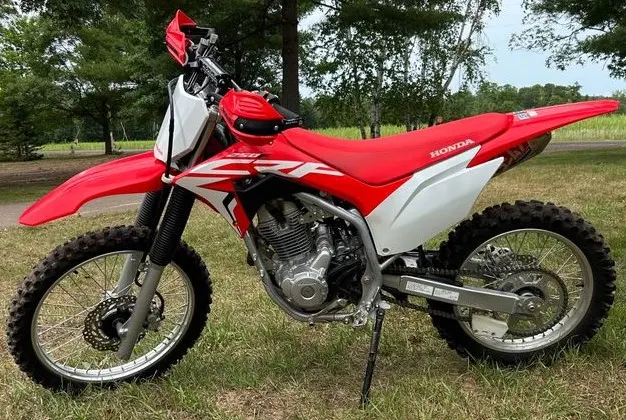
Yamaha
Yamaha started making dirt bikes with fuel injection in 2010 with their YZ450F motocross bike.
These are the dirt bikes from Yamaha that are fuel injected and what year they started with EFI:
- XT250 (Dual Sport) – 2013+
- WR250R (Dual Sport) – All years
- WR250F (Enduro) – 2015+
- YZ250FX (Enduro) – All years
- YZ250F (MX) – 2014+
- WR450F (Enduro) – 2012+
- YZ450FX (Enduro) – All years
- YZ450F (MX) – 2010+

Kawasaki
Kawasaki started making dirt bikes with fuel injection in 2009 with their KX450F motocross bike.
These are the dirt bikes from Kawasaki that are fuel injected and what year they started with EFI:
- KLX230/R/SM (Dual sport/Trail/Supermoto) – 2019+
- KX250X (Enduro) – All years
- KX250F (MX) – 2010+
- KLX300/R/SM (Dual Sport/Trail/Supermoto) – 2019+
- KX450X (Enduro) – All years
- KX450F (MX) – 2009+
- KX450SR (MX) – All years
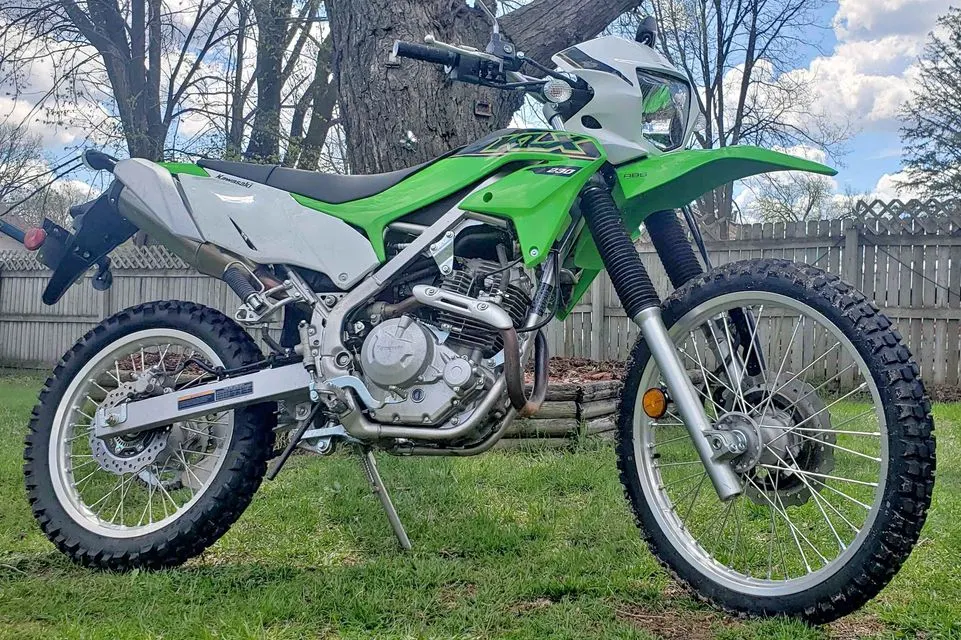
Suzuki
Suzuki started making dirt bikes with fuel injection in 2009 with their RM-Z450 motocross bike.
These are the dirt bikes from Suzuki that are fuel injected and what year they started with EFI:
- RMZ250 (MX) – 2010+
- RMZ450 (MX) – 2008+
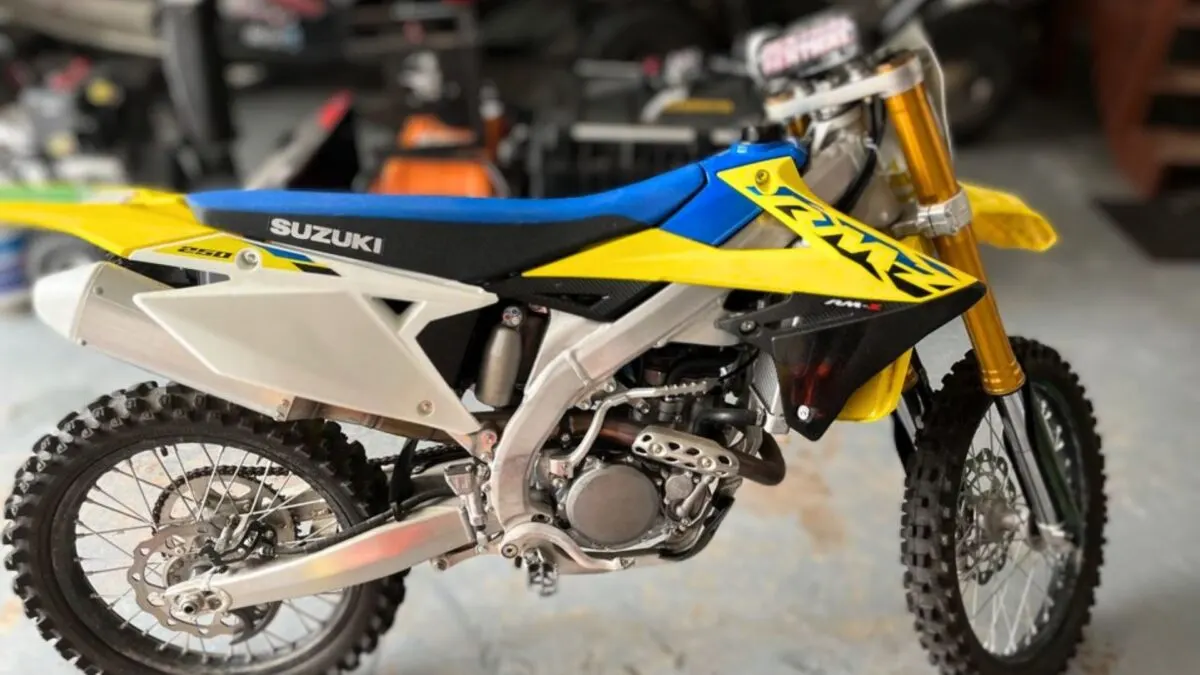
KTM
KTM started making dirt bikes with fuel injection in 2011 with their 350 and 450 SX-F motocross bikes.
These are the dirt bikes from KTM that are fuel injected and what year they started with EFI:
- 125 SX (MX) – 2023+
- 150 XCW (Enduro) – 2020+
- 250 XCW (Enduro) – 2018+
- 250 SXF (MX) – 2011+
- 250 SX (MX) – 2023+
- 300 XCW (Enduro) – 2018+
- 300 SX (MX) – 2023+
- 350 EXC-F (Dual Sport) – All years
- 350 SXF (MX) – All years
- 450 XCFW (Enduro) – 2012
- 450 SXF (MX) – 2011+
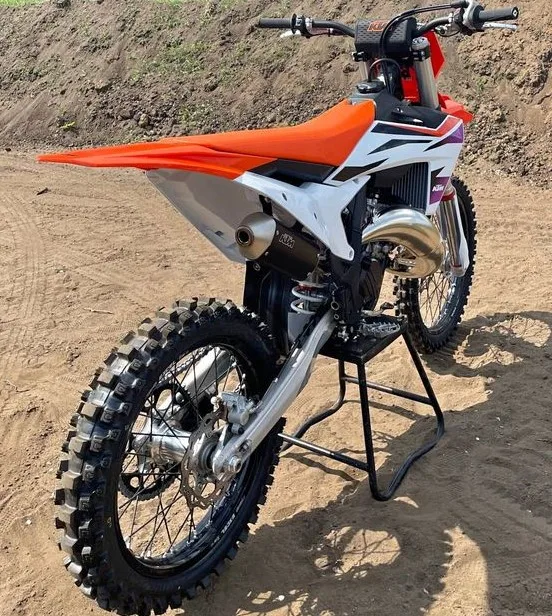
How to start dirt biking for cheap
Want to get into dirt biking but worried about it costing too much to get started? I’ve learned how to do it on the smallest budget without compromising your fun or safety, and I want to share that with you today! Click here to grab my Free worksheet to learn the simple steps.


